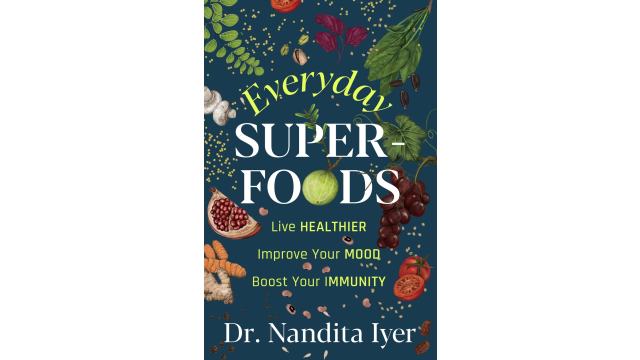Child Nutrition & Healthy Eating

Nutrition isn’t child’s play. One of the primary responsibilities as adults is to ensure that children receive the best possible nutrition for their overall health and development. Plant-based foods must form an essential part of a healthy diet for children, providing them with nutrients and vitamins in their growing years for mind and body development.
Parents and adults play a large role in home cooking and healthy food choices. But children need to be involved in meal planning and preparation, especially when it comes to trying new foods. Duff Goldman, chef, and author of Super Good: Baking for Kids explains in his book that, “When kids make decisions, they tend to be a lot more attentive.”
“For me it’s equally important to get my four-year-old involved in the process of shopping for vegetables and fruits and build conversations around healthy eating,” says Roundglass teacher Rakesh Raghunathan. His grandmother’s stories about food provided the base for his love for cooking and healthy food.
Colorful Plant Nutrients for Kids
When introducing plant-based nutrition to kids, education is key. Nutritionist Keri Romerdahl says, “When asking a group of children where their food comes from, far too many will say the grocery store. I always encourage parents to teach the value of whole foods to kids early, so that when they get introduced to the diet industry and food rules later, they will have a solid understanding of nature as their source of sustenance and nourishment.”
Research confirms that children and adolescents raised on plant-based and vegan diets have shown healthier immune systems, a reduction in diabetes or obesity, and better gut health.
Plant-based foods are rich in vitamins, minerals, and fiber, and are low in fat and cholesterol. A diet that includes a variety of fruits, vegetables, whole grains, nuts, and seeds can help children maintain a healthy weight and prevent chronic diseases like diabetes, heart disease, and cancer. They can also improve mental health, as studies have shown that diets high in fruits and vegetables can help reduce the risk of depression and anxiety.
Typically children need 4-5 meals, including snacks, for the energy their growing body demands. Adults must make informed choices to build “kid’s healthy eating plates” necessary for mind and body development. The rule of thumb is to include diverse ingredients and colorful foods from each food groups. Here are the basics.
Healthy carbs: Carbohydrates give energy children need to support their active years of growing and development. Nutrient-dense carbohydrates such as whole grains like brown rice, quinoa, whole-grain bread and also healthy carbs from fruits like bananas, melons, and oranges, vegetables like sweet potatoes, carrots, and spinach, and legumes like chickpeas, beans, and lentils ensure a growing child gets the necessary nutrients.
Protein: This is essential for the growth and repair of tissues in the body. Introduce plant-based sources of protein like beans, lentils, chickpeas, tofu, tempeh, nuts, and seeds alongside eggs and fish. Avoid processed foods.
Iron: Iron is important for the production of red blood cells, which carry oxygen to the body's tissues. Include iron in the form of lentils, tofu, pumpkin seeds, and fortified cereals in children’s meals. Popeye, with his love for spinach, was on to something. It’s an excellent plant-based source of iron.
Calcium: Doctors advise an early start in calcium-rich food for kids as a must for preventing bone loss at later age. Calcium is necessary for building strong bones and teeth, and childhood is a good period to work it into meals. Plant-based sources of calcium include leafy greens like kale and collard greens, fortified plant milks, and tofu made with calcium sulfate. Cheese, yogurt, and milk are a trio of calcium rich foods for children.
Vitamin D: Kids need to play in the outdoors and one of the reasons is vitamin D, which is necessary for the absorption of calcium and the development of strong bones. The best source of plant-based vitamin D include fortified plant-based milk and mushrooms exposed to sunlight.
Omega-3 fatty acids: Healthy fats that come from omega-3 fatty acids are essential for brain development and function. Good sources of plant-based omega-3 fatty acids include flaxseeds, chia seeds, hemp seeds, and walnuts, that can be “hidden” into snacks for your kids.
Peter Barrett's ricotta ravioli with roasted garlic is a hearty kiddie meal
“Eat Your Vegetables!"
As every harried parent will confirm, forming healthy eating habits in children is a challenging task, but an essential one for their overall health and well-being. In an age when fast food and processed foods, high in sugar and sodium, are easily and cheaply available, it is important for societies to revise their approaches both in schools and homes for healthy eating. According to an article in Politico, by 2024-25 the USDA (U.S. Department of Agriculture) is planning a “total reboot of nutrition standards for school meals.”
Smita Srivastava, author of Fun Food for Fussy Little Eaters: How to Get Your Kids to Eat Fruit and Veg says, “A little patience and creative plating work to get kids interested in their plant foods. Also, encourage them to grow their own food in however a small way as possible.”
The following are some tips on how to form healthy eating habits in children:
Lead by example: Children learn by example, so it's important as a parent or caregiver to eat a healthy, balanced diet.
Make healthy foods readily available: Keep healthy snacks like fruits and vegetables for children to snack on.
Offer a variety of foods: Stock up on fruits, vegetables, whole grains, nuts, and seeds so children receive a range of nutrients.
Start small: Begin by introducing one new plant-based food at a time, and gradually increase the amount and variety of plant-based foods over time.
Experiment with different preparations: Try preparing plant-based foods in different ways to find out what your child likes best. For example, roasted vegetables may be more appealing to a child than raw ones.
Make plant-based foods fun: Use creative presentation methods like cutting fruits and vegetables into different shapes or arranging them in a rainbow pattern.
Offer plant-based alternatives: Work lentils, chickpeas, or tofu into dishes that your child enjoys.
Kiddie Meal Options
Uma Raghuraman, author of My Genius Lunch Box: Lip-smacking Lunch-box Ideas Your Kids Will Love says the best tip to feeding kids is to make the “dish visually interesting, delicious, and nutritious.”
A rotating weekly menu plan with diverse ingredients can help to make the school lunch box tasty and nutritious. These plant-based lunch box ideas are not only delicious but also packed with nutrients and will keep your children satisfied throughout the day. Plus, they are easy to prepare and can be made ahead of time, making mornings less stressful for busy parents.
Here are some delicious and easy plant-based ideas that your kids will love:
Lunch box options: Try whole-grain veggie wraps or veggie sticks with hummus. You can’t go wrong with a comforting peanut butter sandwich, or roasted carrots for a snack break. Spread natural peanut butter on whole-grain bread and add sliced bananas. Pasta salads with whole grain pasta or a hearty chickpea salad mixed with colorful vegetables make for filling lunches. Cooked brown rice with vegetables and beans are good lunch options.
Breakfast ideas: Breakfast is the most important meal of the day, especially for growing kids. Oats with fruit, eggs, smoothie bowls, or tofu scrambles and fruit pancakes make for great options.
Snacks: Kids are big on snacking so include fruits, nuts and seeds and veggies in inventive ways to turn them into healthy snacks. Try spiced almonds, crackers with a bite, muffins, and high fiber fruit and veg dishes, chunky cookies or a grazing platter of rainbow colored veggies, light fruit salads and more.
Healthy tricks for treats: The idea is to not punish kids by withholding sugar but offer healthy plant-based and natural alternative sweeteners.
Try Kanchan Koya’s healthy spiced chia pudding for kids
Food as Reward for Kids
Laura Fuentes, cookbook author of Clean Treats for Everyone says, “It's important that parents not use sweet treats as a bribe or reward for a positive outcome such as eating veggies, performing well, or good behaviour. By separating the two, treats and rewards, parents are also laying the foundation for building a positive relationship with food in the future.”
Studies on changes in eating patterns during the pandemic years of children and adolescents showed “a decrease in fast food, fruit, and vegetable consumption vs. an increase in snacking and sweet consumption”.
Pandemic or not, here are some common unhealthy eating habits that some children may develop, along with ways to avoid or modify them:
Read the labels: Examine food labels, especially for children, to check nutritional levels and ensure processed elements like sugar, unhealthy fat levels, and sodium are minimal or can be avoided.
Skipping meals: Some children may skip meals, particularly breakfast, in an effort to lose weight or due to a lack of appetite. However, skipping meals can lead to low energy levels, poor concentration, and nutrient deficiencies. Encourage your child to eat three balanced meals a day and include healthy snacks as needed.
Overeating: Some children may have a tendency to overeat, particularly when presented with large portions or unhealthy snacks. Overeating can lead to weight gain, digestive issues, and other health problems. Encourage your child to listen to their body's hunger and fullness cues and to eat slowly and mindfully.
Eating too many processed foods: Many children enjoy processed foods such as chips, candy, and soda, which are often high in calories, sugar, and fat. These foods offer little nutritional value and can lead to weight gain and other health problems. Encourage your child to eat a variety of whole foods such as fruits, vegetables, whole grains, and lean protein.
Drinking too much juice or soda: Many children consume too much of each, which can lead to tooth decay, weight gain, and other health problems. Encourage your child to drink water or unsweetened beverages and limit juice and soda to special occasions.
Eating too quickly: This can lead to overeating and poor digestion. Encourage your child to eat slowly and mindfully, chewing their food thoroughly and taking breaks between bites.
To address these health and nutrition problems, it is important to promote access to healthy, affordable foods, and to educate children and families about healthy eating habits. Sandra K. Nissenberg, author of The Everything Kids Cookbook said in an interview, “If my kids wanted a treat, they had options like frozen yogurt, popsicles, yogurt raisins, graham crackers, granola bars, popcorn, etc”.
Encouraging physical activity, reducing food insecurity, and increasing access to healthcare and nutrition education can also help address these issues. By prioritizing the health and nutrition needs of children, we can ensure that they have the best possible start in life.
Finally, be patient and persistent, as it can take time for children to develop healthy eating habits.
Key Takeaways
- Introduce plant-based foods early on.
- Teach kids to avoid processed foods.
- Be role models with healthy food.





